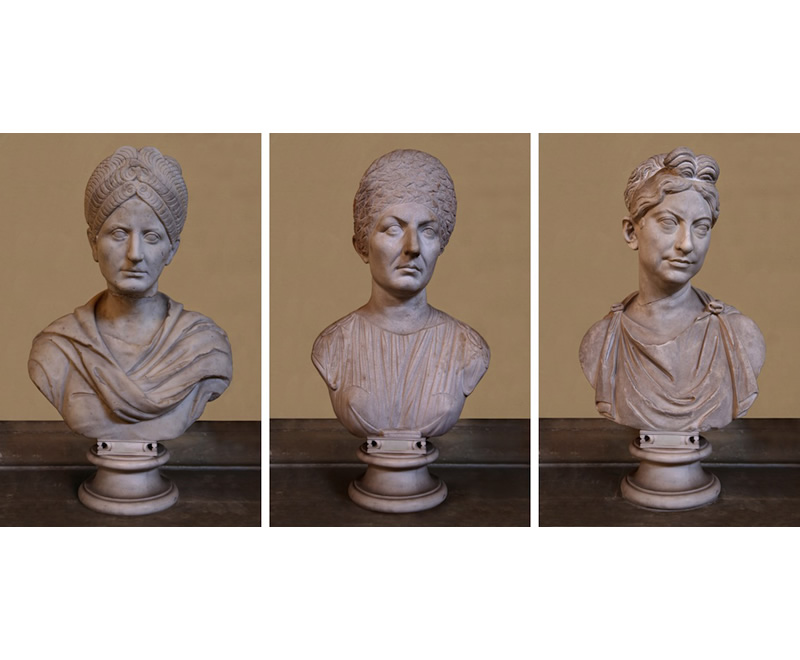
LES MÉGÈRES 2015
Three photographs form this triptych. All three are frontal shots, deliberately standardized, in the stereotypical, rigorous style of a scientific inventory. Each one portrays an antique marble bust. They are portraits of aristocratic Roman women that have been preserved in the Vatican Museums collections, in Rome. Apparently, the artist seems not to be any particular intention other than taking an inventory, and yet he has enabled us to see their essence. The faces seem animated, each with its own surprisingly singular life. He has managed to reveal those lives with great acuity, partially thanks to the choice of presentation, the identical repetition of what could almost be the same photo. The subjects’ characters, expressions and attitudes are thus revealed to the onlooker with a certain force, or theatricality. This work by Paolo Topy is a commentary about life, and in particular about that high-spirited life that makes Italian society so singular. That life, that vitality – which the great Italian movie-makers have been immortalizing for decades – takes on an equally truculent aspect here. It is a truculence that would have been familiar to the playwright Marivaux, who, in 1741, wrote a one-act comedy for the Italian theatre called La Commère (The Gossip), and to William Shakespeare, whose Taming of the Shrew was probably written in 1754. Our Fsome, with their slightly wry, scornful expressions, seem to be questioning the spectacle they are privyellini-esque three to: the endless stream of tourists visiting the museum where they are on display. Although they are speechless, they nevertheless give the impression of enjoying themselves, of being about to laugh and jeer at anyone who walks past them. The least one can say about them is that they are not as stiff as statues. These busts are surely funeral portraits. Having risen above death, and above the aesthetic canons imposed by imperial art of their era, they seem to have more to say about life and the tricks it plays on us, and about human character and behavior, than many of the masterpieces in the Vatican’s collections, such as the Discobolus or the Laocoön, that crowds of tourists flock to daily, practically hypnotized – as much by their guides’ patter as by Myron, Agesander, Polydorus and Athenodoros’s technical prowess. Those tourists, who come from the world over, will surely show less or even no interest in our three “shrews”, who have been relegated to a hallway. So what! We have no trouble believing that the women wouldn’t give a damn. They seem to be a mockery of official art, or rather, of a certain kind of official vision of art and its history, and of the academism – however brilliant it may be – that this vision necessarily implies. What is art? What is it without the life that has been so magnificently captured by this anonymous sculptor? What, while we’re at it, is its role in life? What is it compared to everyday life, to the pleasure of sharing moments of complicity with other beings, as these three women – who we could have sworn we saw in the street just a minute ago – seem to be doing? These are the questions this triptych evokes, questions one could discuss at any time with friends in Rome in one of those trattorias teeming with that high-spirited life that is so unique to Italy.
Yves Peltier
